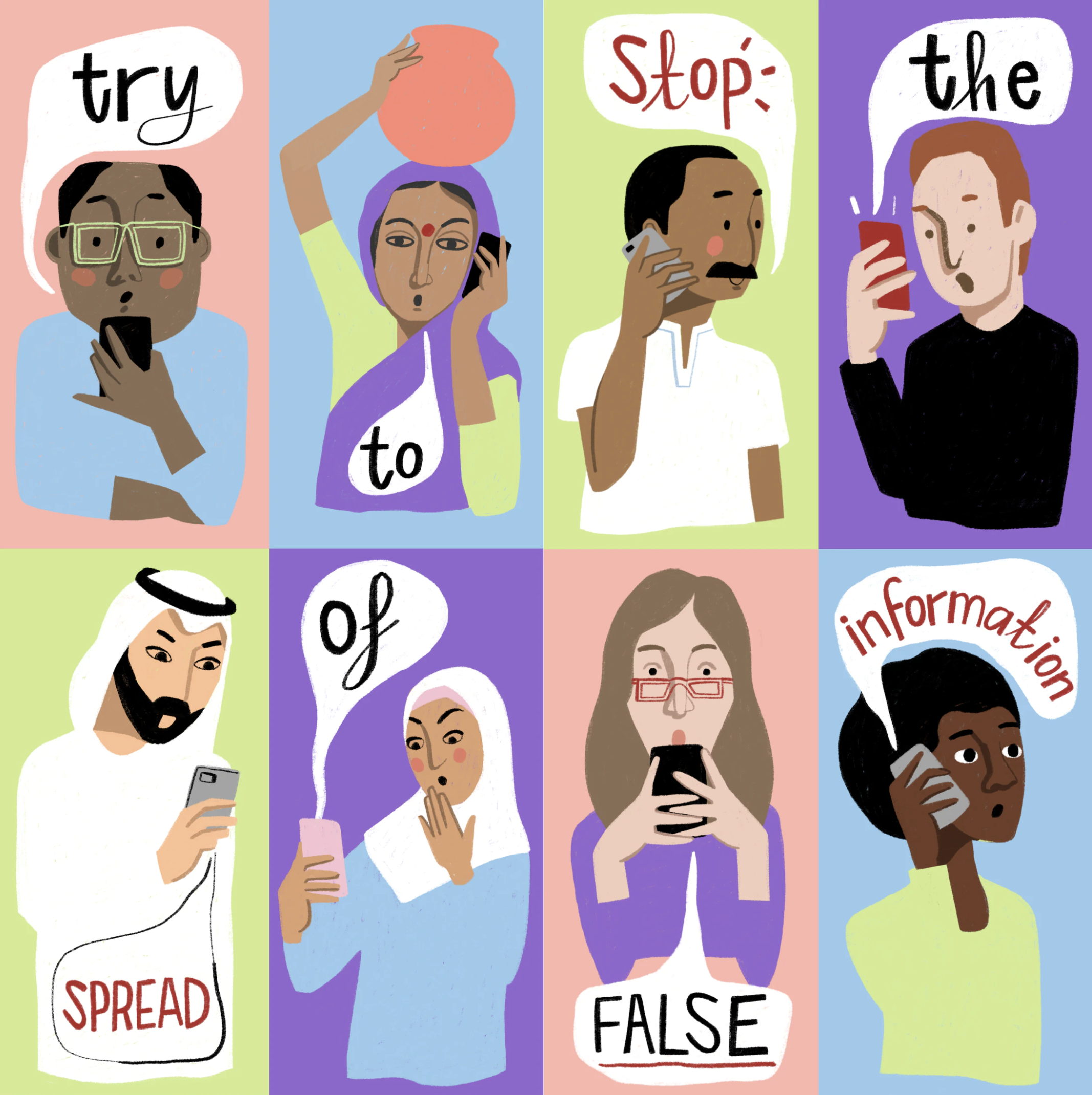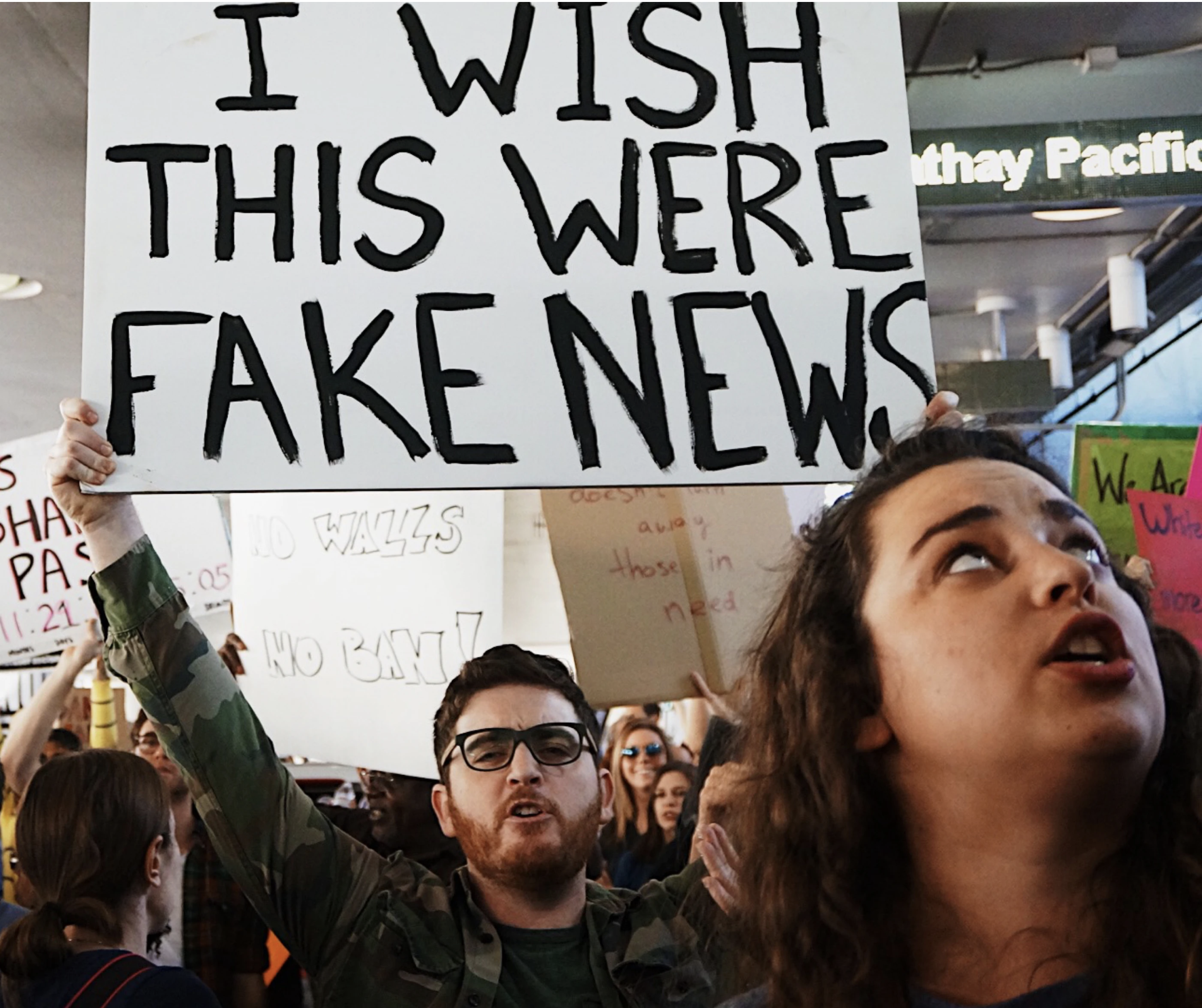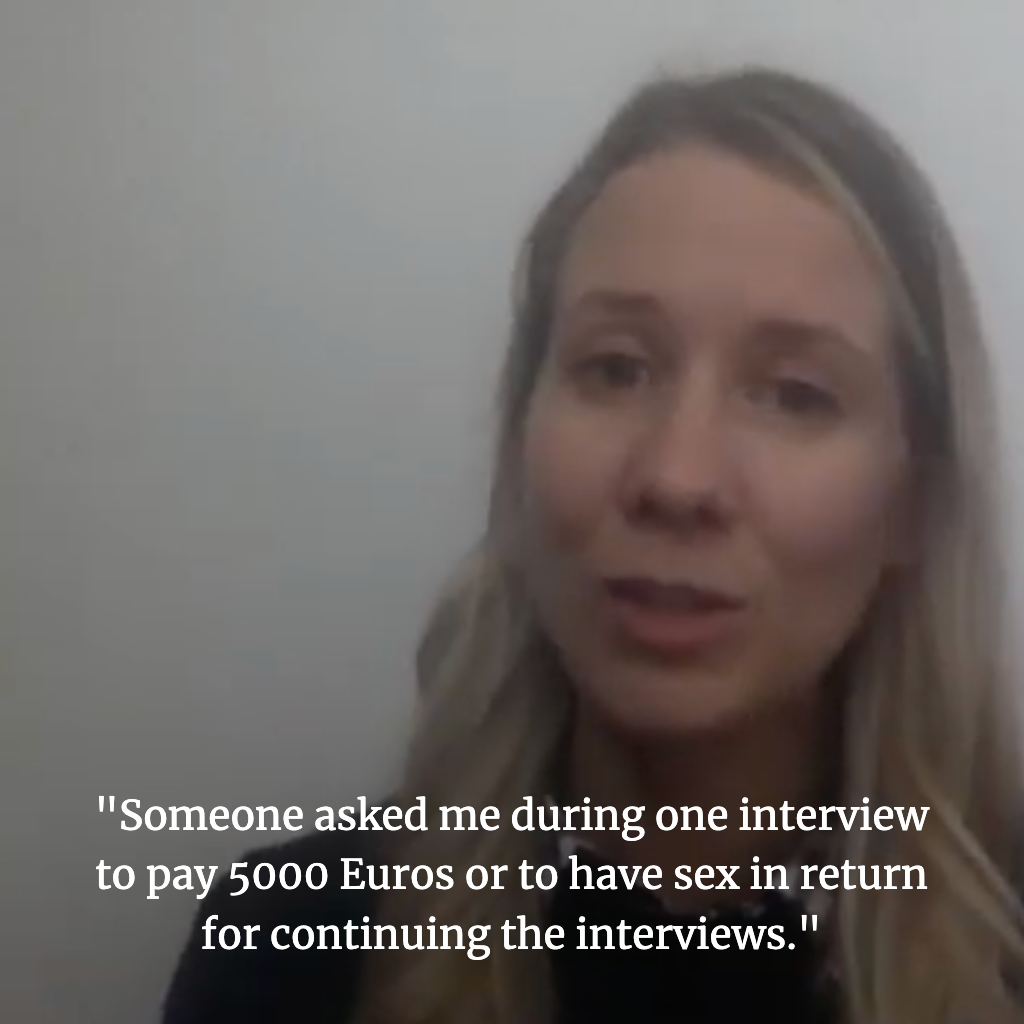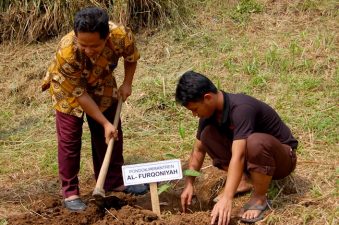
One student goes to the heart of the Macedonian fake news industry. She is asked to pay for her research interview in sex or money.
If the average monthly salary in your city was $400 but you could make $1200 from a page of fake news what would you choose? The city of Veles in the center of North Macedonia has recently gained fame as a key base for the fake news industry. An American student studying at Haifa University in Israel travelled to Macedonia to understand how the propaganda machine is built.
Veles is home to dozens of website operators that create and market fake news for ad dollars. Since 2015, many people in Veles saw that Americans were hungry for news about the presidential race between Hillary Clinton and Donald Trump, and saw this as a great opportunity to advance their business plans.
They created a productive and convincing system for creating and spreading fake news. At first the webpage operators disseminated fake news against both candidates, but they soon realized that the pages attacking Trump received relatively few likes and shares, whereas those supporting Trump and attacking Clinton proved to be a gold mine.
Researchers from Haifa University in Israel studied how the fake news machine became so powerful and influential:
As part of the study, led by Dr. Israel Waismel-Manor from the School of Political Science at the University of Haifa, research student Heather Hughes traveled to Veles to interview those involved in disseminating fake news.
She even joined a course where people learned how to make money through viral internet actions. “During classes, the students do not learn how to disseminate political fake news. The course provides them with tools that enable each of them to become a propaganda machine for any course, from promoting wonder cures to gossip websites and on to websites supporting or opposing any particular political candidate,” Dr. Waismel-Manor explained.

During the study, the Hughes held several interviews with local residents who had worked in the fake news industry, and with young local people who were familiar with the website businesses. Most of the interviewees refused to allow their comments to be recorded, and accordingly the study is based on the notes taken by the researcher during the interviews.

“After someone asked me during one interview to pay 5000 Euros or to have sex in return for continuing the interviews, I decided to leave the city immediately and ended by fieldwork earlier than planned,” reveals Hughes featured in the video below.
The interviews with the fake news disseminators show that they have no ethical problem with the way they behave and no regrets on the issue: “We can’t afford anything, and if the Americans can’t tell the different between real news and fake news, that’s their problem,” some of them said.
“It’s the Americans’ fault that they don’t understand anything. What does it matter if we make money because they can’t tell the difference?”
Hughes asked the fake news disseminators what they think about the fact that they are committing illegal acts? They all replied that their actions were legal, but some of them laughed nervously and were clearly uncomfortable with the question.
Many of the workers in the fake news industry are single young men. They did not become millionaires, but they earned around $1000 a month – three or more times the average wage in Veles. “People need money in order to make money. It’s a circle everyone wants to be part of, but they can’t begin without 500 Euros,” said one female interviewee who is saving money to sign up for a Facebook page building course.
One of the interviewees in the study was Mirko Ceselkoski, who ran the course in Veles on opening and publicizing Facebook pages. Ceselkoski has become a local sensation. He stands at the center of the fake news industry in town and over the years he has taught over one hundred local residents how to make money by promoting Facebook pages and tweets. As mentioned above, the researcher participated in the course and interviewed Ceselkoski:
“Fake news creates a bigger buzz on the various social networks than in the mainstream news. The key to success is building trust with the site’s visitors. You have to maintain the page over a long period with credible information, and after the trust has been built you can start to disseminate fake news. The proportion is 80% accurate content and 20% falsehoods. When the fake news is wrapped up among true stories, it enhances the credibility of the source publishing the story and makes the reader read something that they would otherwise categorize as untrue.”
“The page promoters in Veles and Ceselkoski’s students understood the mechanism that is needed in order to reach a very large number of people. They look for information or sensational details that have some grounding in reality, and then add details that are sometimes true and sometimes not. For example, as part of her election campaign, the American pubic was aware that Hillary Trump supports abortions while Donald Trump opposes them. The fake news disseminators created sensational headlines claiming that the Pope – who, of course, opposes abortions – was supporting Donald Trump’s candidacy for president of the United States. As a result, Trump supporters shared information that, as we explained, was untrue,” Dr. Waismel-Manor commented.
Dr. Waismel-Manor added that “the 2016 elections in the United States aroused a high level of interest and powerful emotions. People were thirsty to read anything, any post or tweet about the campaign. In addition, the young operators quickly learned that this thirst comes mainly from the right-hand side of the political spectrum, so they adjusted their false messages accordingly. It is difficult to gauge what impact this content had, but even if it only influenced a few tens of thousands of Americans, this could have tipped the scales in key states.”
When Ceselkoski was asked whether Russian operators planted information with his students, he replied that all the publications were produced locally in North Macedonia. According to the researchers, Ceselkoski did not want to be seen as a Russian pawn. But the fact that there is no proof of any involvement by the Russian Internet Research Agency (IRA) does not rule out the possibility that they were involved behind the scenes, without the knowledge of the young North Macedonians.
“Most of the local operators emphasized that they had only a single goal: to make money, and lots of it. Since we are drawing close to another election in the United States, we need to remember that while the North Macedonians are the winners in this story, democracy pays the price,” the researchers concluded.
Ask Pablo?

Environmental artist and designer Pablo Solomon
My penpal Pablo Solomon, environment designer and artist over in Texas, writes to me on fake news:
“I have written extensively on fake news, how to detect it, etc. Marvin Gay in his song “I Heard it Through the Grapevine” warns to “believe half of what you see and none of what you hear”. Fake news gets the most press because it is convenient for one side or the other to accuse their rivals of creating or disseminating fake news.
“However our world has become so polarized that fake news is just the tip of the iceberg. You name the topic or the issue or the political view or the moral debate or whatever–and you are bombarded with a constant stream of propaganda disguised as news, entertainment, science, Biblical Truth, sports, statistics, etc.
“However, if you really want to get a relatively clear understanding of any topic you can. You must have some basic understanding of whatever subject is being discussed, some basic knowledge of statistics and how it can be manipulated to prove/disprove anything, and just have a somewhat skeptical attitude.
“Fake news, bias, BS, exaggeration, lies, down playing, white washing, weaponized humor, the rants of sports figures and entertainers, far Left or far Right commentators, etc. really do not concern me. The real evil is in censorship, doxing, threats, Cancel Culture and violent reprisals.
“It was once only tyrannical governments that controlled what ideas we could exchange. Now it is Big Tech, Big Media and even our Universities that are preventing the open exchange of ideas. Give me Fake News over Censorship and Cancel Culture any day of the week.
“There is no issue so evil that it overrides our Freedom of Expression. Free People do not censor the rants or lies of others, instead they shine the Light of Truth. You may cheer the censorship of and attacks on someone or some idea you consider evil today. But once you accept the general idea of shutting up people with whom you disagree, you are creating more Darkness.”



